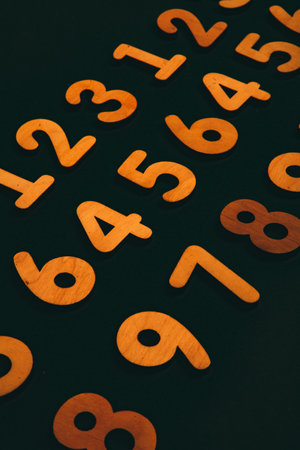Introduction to the Chinese Zodiac and the Rabbit
When it comes to exploring astrology, many Americans are familiar with the Western zodiac—signs like Aries, Taurus, and Gemini, each tied to a specific birth month. But across the Pacific, Chinese astrology offers a unique system based on a 12-year cycle, with each year represented by an animal. Among these animals, the Rabbit stands out as a symbol of good fortune, peace, and elegance. Unlike Western astrology’s monthly signs that focus on planetary positions, the Chinese zodiac is rooted in lunar years and ancient mythology. This system blends folklore, philosophy, and cultural traditions that shape personality traits and life paths based on your birth year. For Americans looking to broaden their astrological horizons or connect with Asian heritage, understanding the Rabbit’s place in Chinese astrology opens new perspectives on luck and self-understanding. In this article, we’ll dive into what makes the Rabbit special, explore its lucky colors and numbers, and explain how these concepts can resonate within American culture.
2. The Rabbit: Symbolism and Personality Traits
In Chinese astrology, the Rabbit is a cherished symbol representing good fortune, elegance, and kindness. For Americans unfamiliar with this tradition, think of the Rabbit as sharing traits with figures like the “gentle peacemaker” or the “quiet achiever” often admired in American culture. The Rabbit is the fourth sign in the 12-year Chinese zodiac cycle and is associated with calmness, grace, and sensitivity—qualities that are both celebrated and sometimes misunderstood.
Symbolism of the Rabbit in Chinese Astrology
The Rabbit carries deep symbolic meaning in Chinese culture. It’s seen as a bringer of peace, harmony, and luck—much like how Americans might view a four-leaf clover or a lucky penny. Rabbits are also connected to the moon in Chinese mythology, believed to live on its surface and create elixirs for immortality, reinforcing their mystical and gentle nature.
Personality Traits of People Born in the Year of the Rabbit
| Trait | Chinese Zodiac Description | American Equivalent/Stereotype |
|---|---|---|
| Gentleness | Kind-hearted, avoids conflict, compassionate | “Peacemaker” or someone who seeks harmony in relationships |
| Sensitivity | Easily affected by surroundings, empathetic to others’ feelings | “Empath” or someone who is highly attuned to others emotions |
| Elegance | Tasteful, stylish, values beauty and refinement | “Class act” or someone with a strong sense of style and grace |
| Caution | Careful decision-maker, thoughtful about risks | “Prudent planner,” not impulsive or reckless |
| Resourcefulness | Able to adapt to challenges, clever problem-solver | “Quick thinker” or “creative troubleshooter” |
| Reserved Nature | Prefers small gatherings, may seem shy or introverted at first | “Introvert” who opens up over time; values close-knit circles over big crowds |
Stereotypes vs. Reality: Understanding the Rabbits Depths
While some might stereotype Rabbits as timid or overly cautious—similar to labeling someone as too “soft”—the reality is more nuanced. In Chinese astrology, these qualities are strengths rather than weaknesses. Rabbits are admired for their ability to navigate social situations diplomatically and make decisions that benefit both themselves and those around them. For Americans trying to relate, imagine someone who quietly gets things done behind the scenes—a dependable friend or colleague who avoids drama but always seems to know just what to do when it counts.
![]()
3. Good Fortune and the Rabbit: What It Means
In Chinese astrology, being born in the Year of the Rabbit is often associated with an abundance of good fortune. But what does “good fortune” actually mean for Rabbit-born individuals, especially when viewed from an American perspective? In traditional Chinese culture, luck isn’t just about random chance or winning the lottery—it’s a holistic concept that includes harmony in relationships, career success, financial stability, and overall well-being. For Rabbits, this sense of good fortune comes from their gentle nature, diplomatic skills, and ability to avoid conflict. They are seen as naturally attracting positive outcomes because they approach life thoughtfully and with kindness.
For Americans, luck is often framed around seizing opportunities or experiencing unexpected windfalls—think of finding a four-leaf clover or hitting it big in Las Vegas. While there’s some overlap with the Chinese idea of good fortune, such as wishing someone “good luck” before a big event, the cultural roots differ. In the context of the Rabbit sign, luck isn’t purely about chance but about creating favorable circumstances through wise decisions and harmonious living. This is similar to the American value of “making your own luck,” where personal effort and attitude shape future success.
Understanding these subtle differences helps bridge cultural perspectives. While both cultures celebrate luck and good fortune, Chinese astrology sees it as something you cultivate through character and lifestyle (especially for Rabbits), rather than something that simply happens by accident. If you’re Rabbit-born in America, think of your good fortune as a blend of inner calm, social grace, and smart choices—a concept that resonates whether you believe in astrological signs or not.
4. Lucky Colors for the Rabbit and Their American Significance
When it comes to Chinese astrology, each zodiac animal is associated with specific lucky colors believed to enhance fortune and harmony. For those born in the Year of the Rabbit, traditional lucky colors include red, pink, purple, blue, and yellow. Each of these hues carries rich symbolism not only in Chinese culture but also holds significant meaning within American color associations. Understanding these connections can help Americans appreciate the deeper resonance of these auspicious colors.
Traditional Lucky Colors for the Rabbit
| Color | Chinese Symbolism | American Cultural Association |
|---|---|---|
| Red | Good luck, happiness, warding off evil | Passion, love, excitement, celebration (as seen in holidays like Valentines Day and Fourth of July) |
| Pink | Romance, gentle energy, harmonious relationships | Affection, sweetness, femininity (popular for celebrations such as baby showers and weddings) |
| Purple | Nobility, spirituality, luxury | Royalty, creativity, individuality (often associated with high school or college team colors) |
| Blue | Calmness, peace, healing energy | Trust, loyalty, stability (deeply rooted in American patriotism and business branding) |
| Yellow | Prosperity, vitality, good fortune | Happiness, optimism, energy (iconic in smiley faces and summer imagery) |
Cultural Context: Bridging East and West Through Color
The Rabbit’s lucky colors are more than aesthetic choices—they represent hope and positive energy. In Chinese tradition, wearing or displaying these hues during birthdays or Lunar New Year celebrations is thought to attract good luck. For Americans interested in integrating this practice into their own lives, choosing clothing or home décor in these colors can be a subtle way to invite positivity based on both Chinese beliefs and familiar U.S. cultural meanings.
Practical Tips for Using Rabbit Lucky Colors in America
- Home Décor: Incorporate blue or yellow accents to foster calmness and cheerfulness in living spaces.
- Personal Style: Wearing red or pink accessories can symbolize confidence and affection during important events.
- Celebrations: Use purple themes for parties to convey luxury and creativity while honoring both traditions.
The Takeaway: Color as a Cross-Cultural Bridge
The lucky colors of the Rabbit offer Americans an opportunity to blend Eastern wisdom with Western sensibility. Whether you’re seeking good fortune or simply wish to refresh your environment with meaningful hues, appreciating the shared symbolism behind these colors can create a richer sense of connection across cultures.
5. Auspicious Numbers for the Rabbit in Everyday Life
Numbers hold special significance in Chinese astrology, and for those born under the sign of the Rabbit, certain numbers are believed to bring luck, prosperity, or caution. Understanding these numerical associations can be especially intriguing for Americans who enjoy exploring global cultural practices or are simply looking for new ways to invite good fortune into their daily lives.
Lucky Numbers for the Rabbit
The most auspicious numbers for Rabbits are 3, 4, and 6. These numbers are traditionally linked to harmony, growth, and smooth progress—qualities that reflect the Rabbit’s gentle and diplomatic nature. For example, the number 3 is associated with creativity and communication, while 4 is often tied to stability (though it holds mixed meanings in broader Chinese culture), and 6 represents smooth sailing or good luck in endeavors.
How Americans Might Use Lucky Numbers
Incorporating these numbers can be as simple as choosing them when picking a lottery ticket, selecting a seat number at an event, or even planning important dates like weddings or business launches. American fans of numerology may find this practice resonates with their own beliefs about lucky digits or patterns. Additionally, using these numbers for home addresses, phone numbers, or even as part of passwords can be a fun way to integrate a cross-cultural tradition into modern life.
Unlucky Numbers to Avoid
Conversely, Rabbits are advised to avoid the numbers 1, 7, and 8. In Chinese tradition, these numbers can symbolize isolation (1), conflict (7), or setbacks (8) for this zodiac sign. While Americans may not inherently see these numbers as unlucky, being mindful of them can add an extra layer of intention to everyday decisions—especially if you’re interested in blending East Asian wisdom with Western habits.
A Fusion of Cultures: Making It Your Own
Ultimately, whether you believe in lucky numbers or simply enjoy the novelty, embracing these auspicious digits adds a thoughtful twist to daily routines. The Rabbit’s approach encourages a blend of sensitivity and practicality—qualities that fit well with the American spirit of personal expression and openness to diverse traditions. By weaving these lucky numbers into your life, you’re not only honoring a centuries-old system but also creating new rituals that reflect your unique identity.
6. How to Incorporate Rabbit Luck into Modern American Life
Practical Ways to Bring Rabbit Energy Into Your Daily Routine
The gentle, lucky qualities of the Rabbit in Chinese astrology can be woven into American life with a few mindful practices. Start your morning by wearing something in Rabbit-favored colors such as soft blues, pinks, or classic gold accents—think neckties, jewelry, or socks. If you need a fresh start or want to invite good fortune before a big meeting, carry a small rabbit-themed charm in your pocket or purse for a subtle but meaningful boost.
Home Décor: Creating Spaces That Invite Good Fortune
Channel the calm and luck of the Rabbit by decorating key spaces with symbolic touches. Add throw pillows or artwork featuring rabbits to living rooms or entryways. Use accent pieces in lucky numbers—like grouping candles or picture frames in sets of three, four, or nine (the Rabbit’s auspicious numbers). Incorporate pastel hues or metallic golds into your color palette for an inviting and fortunate atmosphere that seamlessly fits contemporary American design aesthetics.
Celebrations and Traditions: Blending Cultures Creatively
For birthdays, anniversaries, or holidays like Easter and Lunar New Year, add a Rabbit-inspired twist. Host a themed dinner using tableware decorated with rabbit motifs. Gift friends and family items in the Rabbit’s lucky colors or numbers—perhaps a bouquet of nine flowers or a box of four gourmet chocolates. If you’re celebrating the Year of the Rabbit, organize a fun scavenger hunt with clues based on the animal’s traits, like kindness and agility.
Business and Career: Attracting Success With Rabbit Wisdom
Bring good luck into your workspace by placing a tasteful rabbit figurine on your desk—a nod to both cultural appreciation and positive energy. Use green plants (symbolizing growth and harmony) paired with gold pots to combine prosperity and tranquility. When launching new projects or setting team goals, consider starting on dates that align with Rabbit-lucky numbers for an extra layer of intention. You can even use “Rabbit” as a code name for initiatives focused on growth, innovation, or diplomacy.
Modern Mindset: Making Rabbit Luck Your Own
Ultimately, incorporating Rabbit-related good fortune into American life is about blending tradition with personal style. Whether it’s through intentional décor choices, creative celebrations, or mindful routines, these tips offer accessible ways to enjoy the charm and optimism associated with the Rabbit—no matter where you live or what you believe.


